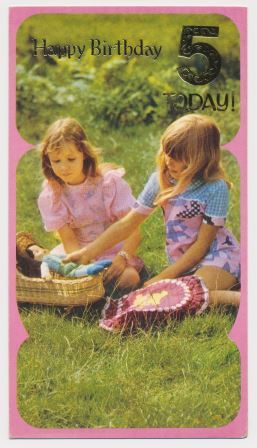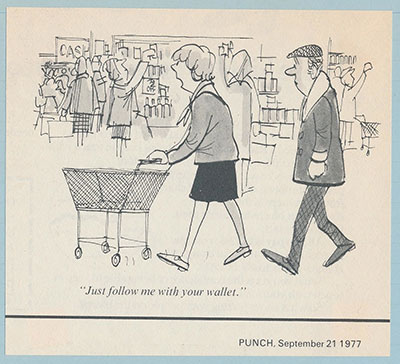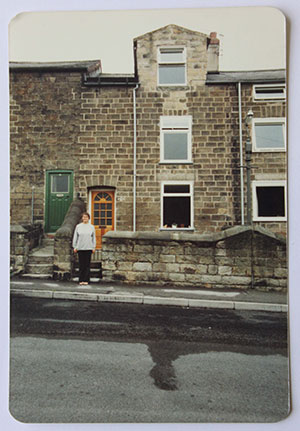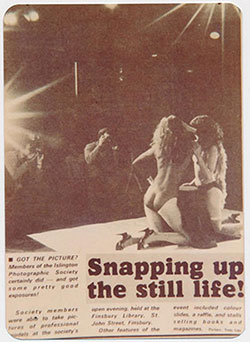Lorna Robertson, graduate in MA History of Art with Photography, discusses the representation of women in visual culture as explored in the Jo Spence Memorial Library.

The Jo Spence Memorial Library (JSML) holds a range of visual material that Jo Spence had collected, which includes photographs, greeting cards and cartoons. I have found the collection valuable for research into the relationship between photography and identity and also the ways that Spence used existing visual material in her work.
Much of the material in the JSML explores the representation of women in visual culture, and the collection includes photographs that Spence took of women’s magazines during Britain in the 1970s and 1980s. I was initially struck by the number of advertisements that used images of heterosexual courtship to sell products, from tights to kettles.
Other materials, such as greeting cards, highlight the way that children are represented from a young age in heterosexual gender roles.I also began to see how these magazines used photography to reinforce tradition values around the family, and with this in mind, I began to consider issues around the representation of domesticity. Here, the image of woman as sex object is joined by a domesticated image of wife and mother, both of which may be used to sell domestic products.

In these contexts, the white, affluent, heterosexual family is presented as an aspirational lifestyle, but Spence also noted the way that other adverts play on the fear of not living up to these roles in order to sell medication for anxiety and depression.
The JSML collection also holds a collection of newspaper cartoons and I found that when looking at the cartoons in conjunction with magazine images, the cartoons often undermined the ideologies of the magazines.

Issues on the visual representation of men are also addressed in the collection, for instance the materialism of advertisements is countered by the suggestion that consumerism may be a financial strain on married men.
This issue of consumerism in relation to the family also developed my sense of Spence’s engagement with class, which I explored by juxtaposing different images in the collection. For example, the advertisements for a spacious, fully equipped kitchen appears unviable and economically detached from the photograph of Spence standing in front of a small terraced house.

The collection does, however, always underscore the role that photography plays in constructing and maintaining ideologies in Western society. The material points to the frameworks behind a range of photographic practices, such as the male members of the Islington Photographic Society photographing two female models in a studio.
Or how the family album is influenced by the photographic styles of companies such as Kodak and high street photographers, who privilege posed portraits of occasions such as marriage, births and the family get together.
Other materials in the collection also indicate that Spence was concerned with image construction in relation to the wider history of photography, such as images of carte de visite and vintage advertisements for photography equipment.

Spence was clearly an accumulator of visual material and a photograph in the JSML collection gave me an idea of how Spence used the material in her work. The photograph is Spence holding a book, in which she has assembled images associated with female childhood.

Here, Spence has used a school photograph of herself as a child from 1939 (which I identified through cross-referencing with books in the JSML), and placed it alongside an advert for the Miss Pears competition and two stickers of the cartoon character Wonder Woman. However, Spence has made visible a disjuncture between these aspirational images of childhood and her actual experience growing up as a working class child in Britain during the Second World War, through a snap shot of a child standing in front of another small terraced house and the hand written text ‘I HAD A NICE TIME MOST OF THE TIME’.
The process of investigating each of the components in this photograph illustrated to me that Spence had constructed this image. Not only had she assembled the found images in the album, but Spence had also assembled the situation of herself sitting on a chair, holding the album, looking at the camera, the artificiality of which is further emphasised by the back drop of the white wall and poster, which echoes the set-up of studio portraiture. This montaging, like the JSML collection as a whole, touches on discussion presented by Spence in articles from the 1980s on the slippage between images from our personal lives, images of popular culture and the construction of our identity.
